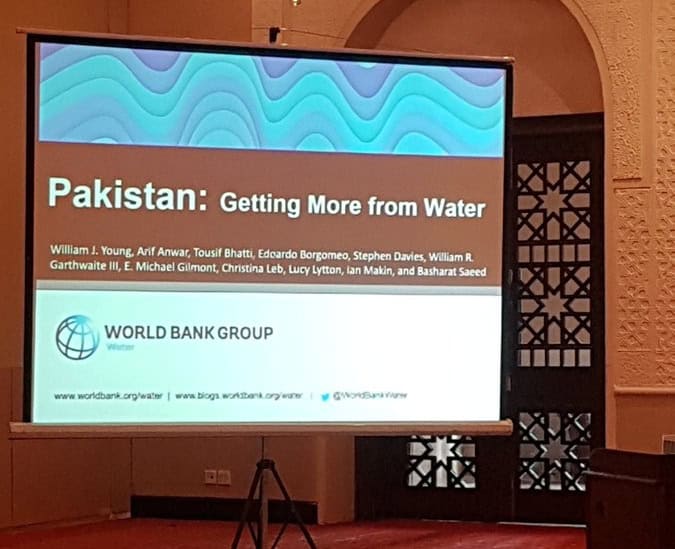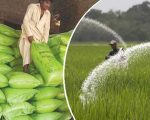ISLAMABAD – Pakistan can get more economic, social and environmental benefits from its water, subject to urgent reforms to improve water use efficiency and service delivery, says a new report from the World Bank.
The report, Pakistan: Getting More from Water, states that while Pakistan, the sixth most populous country in the world, is well-endowed with water, water availability per person is comparatively low. Water wastage is high and agricultural yields are low compared to most countries.
Although climate change and trans-boundary issues are a significant hindrance for Pakistan’s water sector, the greatest challenges and opportunities are internal, not external, to Pakistan.
So, improving water-use efficiency and productivity, delivery of water services in cities and in irrigation, and addressing environmental sustainability are the most pressing needs, according to this new analysis.

“Water security in Pakistan is reaching a critical point that demands urgent attention and reform,” said Illango Patchamuthu, World Bank Country Director for Pakistan. “Boosting irrigation productivity, while paying more attention to the social and environmental aspects of water management, is critical.
This will require strong collaboration between federal and provincial governments and other stakeholders. The objective must be to strengthen water governance and strategic water planning, to build resilience in the face of a changing climate and growing water demands.”
While irrigation dominates water use in the country, the four major crops (rice, wheat, sugarcane, and cotton) that use 80 percent of water contribute only 5 percent of Gross Domestic Product (GDP).

Poor water management is conservatively estimated to cost 4 percent of GDP or around $12 billion per year. These costs are dominated by inadequate domestic water supply and sanitation, but also include the costs of floods and droughts.
Poor sanitation and a lack of wastewater treatment cause water-borne diseases that kill 40,000 children each year. Rivers, lakes and the extensive Indus Delta are severely degraded undermining important ecosystem services.
“New dams can help improve water security but will not address the most pressing water problems that Pakistan faces,” says William Young, author of the report. “Irrigation systems need modernizing; hydromet systems should be expanded; and urban water infrastructure, especially for wastewater, requires major investment. The National Water Policy provides a sound basis for reform, but provincial water policies need much attention, and the underpinning legal framework is incomplete and needs strengthening.”
Reaching upper-middle income status by 2047 is an ambitious goal for Pakistan and will require a significant change in the structure of the economy. However, water scarcity need not limit growth.
Irrigation water use can increase to meet growing food demands if efficiency improvements are made.
Changes in the diet with increasing wealth will have significant impacts on commodity demands and crop choices.
Agricultural subsidies must be reformed to reflect the real value of commodity exports and of water. Without reform, irrigation water use will limit water access by industry and services sectors, constraining economic growth. Attention must be given to increasing flows below Kotri Barrage both for the health of the delta and for Karachi water supply.
https://en.dailypakistan.com.pk/headline/pakistan-gets-first-ever-national-water-policy-to-tackle-crisis/
The report was prepared by the World Bank with external contributions from local and international water experts, including the International Water Management Institute and the International Food Policy Research Institute.













